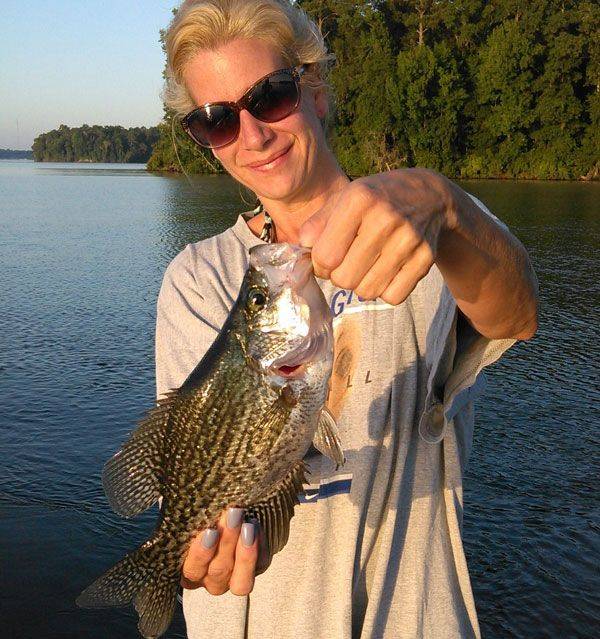
Lake Talquin has transitioned into the dog days of summer by now and bass fishing is best during low light hours. That’s not to say you can’t catch a few during the heat of the day, but it’s definitely better early and late in the day. I would suggest trying to night fish, but Lake Talquin is not the place to be after dark with its abundance of underwater snags, unless you hire a guide or know the lake well. This time of year schooling bass can be found in many places. Main lake points, ledges and humps near the river channel or mouths of creeks is a good starting point when searching for schoolers. With decent electronics it will be easier, not necessarily to find them, but to eliminate places where they aren’t! If your screen isn’t blown up with shad, move on to the next spot. Lots of times as you idle around these areas the boat motor will stir up the school and get them biting. Always look back after boating through an active area of shad. Schooling bass are usually smaller, like in the 2-3 pound class, but that doesn’t mean you’re not gonna catch a 5 or 6 pounder schooling with them.
A couple of my favorite baits for schoolers are the Steel Shad in chrome or gold, or a ¼ oz rattle trap. I like to throw these with a spinning reel spooled with 30 lb test braided line. I tie a 15 lb test fluorocarbon leader about 20” long with a swivel and my lure to the end of the braid. I use a 7 ½ ft. rod and I can sling these things a mile. The swivel keeps my line from twisting and the fluorocarbon basically is invisible under the water and the fish can’t see it. This rig is super sensitive and you can detect strikes on a slack line while your bait is falling. I also like to use the back reel feature on a spinning rod. Being from up north I grew up using light tackle. 6 lb test was the norm for small mouth and walleye, and back in the day you didn’t trust the drag systems on a lot of those reels.
Another trick to try is keep a Carolina rig handy. The bigger bass will lay under the active fish waiting for an easier meal, rather than chase with the rest. Also, a great big diving crank bait will sometimes work on those bigger bass. One last thing- on the full or new moon is when the bream bed the most. Even though water temps are in the 90’s, bass will lurk in those bedding areas. A top-water prop-bait or even a buzz-bait might get you one of those big ones munching on the bream.
[easy-social-share]
